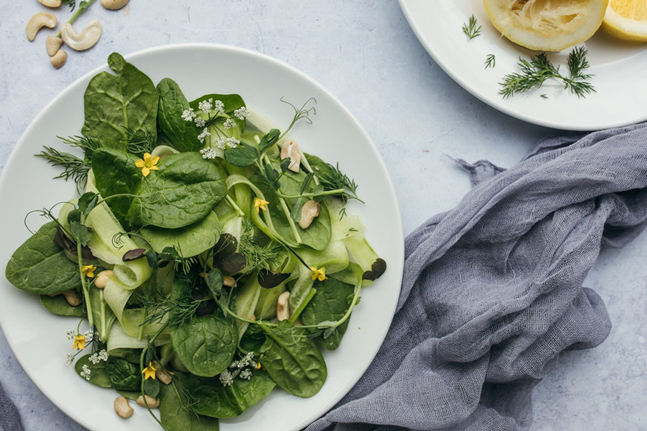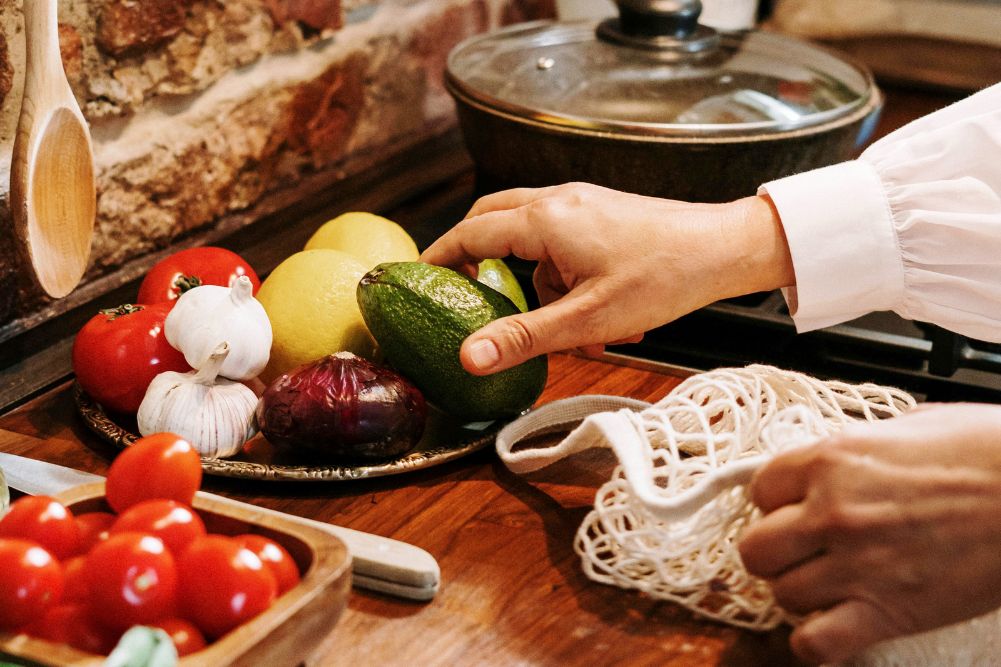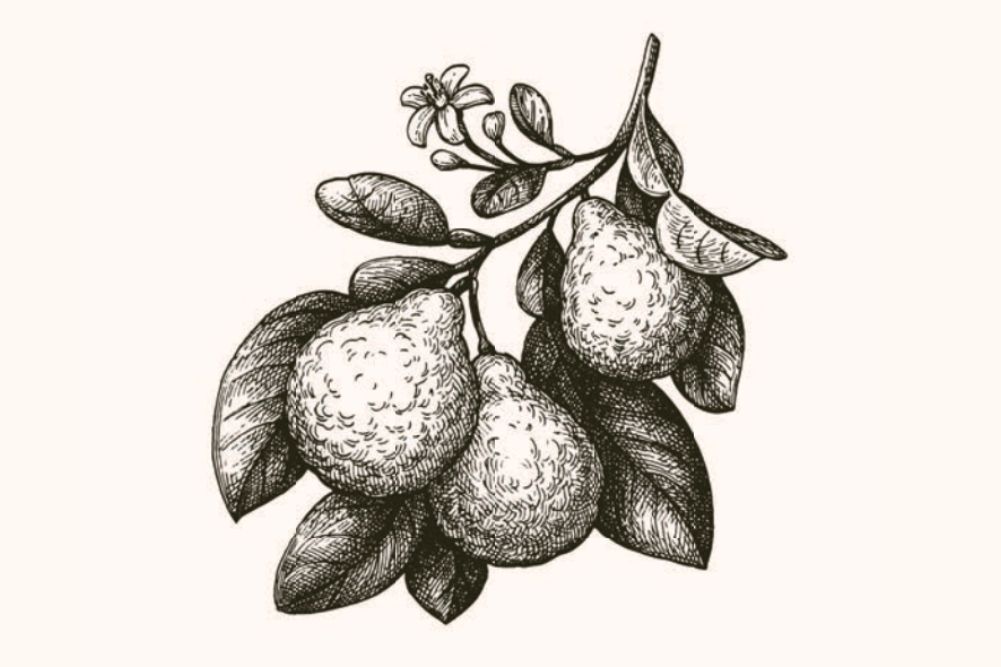An in-depth look at leafy greens and their health benefits
Consumed by humans throughout history and maligned by salad-haters as “rabbit food”, leafy greens include some of the easiest-to-grow, most nutrient-dense yet inexpensive health foods on the planet. Consisting of the edible leaves of plants, these inauspicious wonder foods may also include the shoots (as in sprouts and micro-greens) and stalks (as in celery) of plants.
Botanical diversity
Broadly speaking, leafy greens cover a diverse range of species, including cruciferous vegetables like kale, bok choy, Brussels sprouts, kohlrabi and cabbage, as well as lettuces, the leaves of the beet family and herbs such as fennel, fenugreek and coriander. Less known edible leafy greens include wild greens such as chickweed, purslane and dandelion, the tops of vegetables, the leaves of some flowers and root vegetables, water plants such as sea lettuce (Ulva lactuca) and those specific to other cultures — komatsuna (Japanese mustard spinach), lingaru (fiddlehead fern) and amaranth are just a few examples. Not all “greens” are actually green but may be purple, red or multi-coloured.
According to founder of Food Plants International, Bruce French, there are about 8000 plants with edible leaves across the planet. These include indigenous species, the obscure and neglected and the well known. French, a former agriculturist from Tasmania, has collated the biggest database of edible food plants in the world. He says we should do more to value and eat leaves, especially those native to our own country.
Up & coming supergreens
With Australian bush foods the focus of research and development and the newest culinary ingredients at cutting-edge restaurants, in the future more of us might be putting them on the table. Lauded as high in antioxidants and nutrients, greens indigenous to Australia, such as native cress, sea parsley, saltbush and Warringal greens, are also better adapted to our environment.
Duckweeds (Lemnaceae) are also being explored for their potential as a food. Fast-growing, rootless and common aquatic green plants consumed by ducks, the species have traditionally been eaten by people in parts of South-East Asia. According to researchers at Friedrich Schiller University, Jena, in Germany, it’s a rich source of protein, omega-3 fatty acids, vitamins and minerals.
Green power
Most leafy greens are packed with health-giving chlorophyll and minerals such as potassium, magnesium, iron and calcium, as well as antioxidants and vitamins E, C, K, folate and carotenoids. Leaves with greater pigmentation tend to be richer in antioxidants and nutrients. Low-calorie, low-GI and high in fibre, they’re also the perfect slimming food.
In research published by the US Centers for Disease Control and Prevention (in 2014), leafy greens and cruciferous vegetables came top of the list for overall nutrient density. The study, by William Paterson University, measured 47 “powerhouse foods” for levels of 17 nutrients and phytochemicals identified as protective against chronic disease such as cancer and heart disease.
The green leafies trumped yellow/orange fruit and veg, citrus, alliums and berries. The highest ranked were watercress, Chinese cabbage, chard, beet greens and spinach (in that order).
As some of the most versatile foods to use in cookery, leafy greens can be added to sandwiches, wraps, rice paper or spring rolls, dumplings, gnocchi, pasta, savoury pies, stir-fries, omelettes, frittatas, soups, stews and kimchi.
Sadly, polls on vegetable consumption, such as one conducted in 2013 by Food Safety Australia, show such powerhouse greens rarely feature on our dinner plates. And for salads we tend to favour less bitter, more tender leaves, such as that salad mainstay, iceberg lettuce. However, research is discovering that the bitterness inherent in many older leafy varieties is related to digestive, anti-carcinogenic and other health benefits.
Greens also have a desirable alkalising impact on the body due to their potassium, calcium and magnesium content. Chlorophyll-rich, they are cleansing to your body and deodorise your breath thanks to the presence of phenolic compounds in leafy greens such as parsley, mint and lettuce.
However, that’s literally the tip of the iceberg when it comes to the health benefits of leafy greens. In research they’ve been found to reduce the risk of cancer and heart disease, reduce inflammation, blood pressure and cholesterol, boost the immune system, stabilise blood sugar, slow ageing and keep your eyes, skin, bones, brains and memory healthy.
Highly perishable once picked, leafy greens are less likely to be nutritionally depleted by long periods of storage and transport. Eating them might even help your local economy: unlike more exotic foods, they’re less likely to have travelled far.
Providing more nutrition per square foot of garden than most crops, leafy greens are additionally among the easiest plants to grow. This makes them very useful plants for those who want to harness the health benefits of fresh, organic produce from their own backyard but have little time, space or money for a big garden.
Eating your leaves
As some of the most versatile foods to use in cookery, leafy greens can be added to sandwiches, wraps, rice paper or spring rolls, dumplings, gnocchi, pasta, savoury pies, stir-fries, omelettes, frittatas, soups, stews and kimchi.
Think beyond the salad bowl and blend them into your smoothies, juices, pestos and dips. Some leafy greens, like kale, are delicious baked at low heat in the oven to turn them into chips. Reduce waste by using the crowns of your vegetables, such as carrot, radish and beet tops, and the leaves of tomatoes and celery, all of which are edible.
Use sprouts, micro-greens (harvested within 14 days of planting the seed with only one or two leaves present) and leafy herbs liberally in salads and sandwiches and as garnishes for fun flavours and textures. Although consumed in small amounts, thanks to their high levels of antioxidants culinary herbs can “contribute significantly to the overall daily intake of antioxidants”, suggests a study published in the Journal of Nutrition.
Leafy greens are also delicious enjoyed in their own right with lemon juice, olive oil, cider vinegar, balsamic and other dressings or in Asian-style salads along with mint, coriander and lime juice.
Enjoy a bounty of leaf varieties in your diet. As for the benefits of antioxidants, research suggests it’s advantageous to consume small amounts from many varieties rather than a lot from a favoured species or two.
Oxalates, naturally occurring in many foods and in higher levels in some greens, such as spinach, kale and Warringal greens, might negatively impact on calcium absorption if large amounts are consumed. However, the research is still unclear. For those who are concerned or sensitive to oxalates, boiling and steaming reduces the oxalate content of foods.
Know your greens
The following leafy greens star in William Paterson University’s top 20 powerhouse fruits and vegetables. How well do you know them?
Watercress (Nasturtium officianale)
In the study by William Paterson University New Jersey, watercress was the most nutrient-dense of 47 powerhouse fruits and vegetables, supplying over 100 per cent of the daily value of 17 nutrients per 100g of the food. Its spicy, peppery taste indicates the presence of sulforaphane, a compound scientifically proven to inhibit cancer, found in vegetables of the Brassicaceae family. According to watercress.com it contains over 15 vitamins and minerals, “more vitamin C than oranges, more calcium than milk, more iron than spinach and more folate than bananas”. As the name suggests, grow it in a wet environment.
Chinese cabbage (Brassica rapa)
Of major importance in Asian cookery, and fermented to make kimchi, Chinese cabbage came second place in the above study. High in vitamins A, C and K and a good source of calcium, omega-3 and omega-6 fatty acids, one cup of shredded raw Chinese cabbage supplies 63 per cent of the recommended daily allowance (RDA) of vitamin A and 52 per cent of that for vitamin C.
Chard/Swiss chard (Beta vulgaris cicla)
Known for its rainbow of leaves and thick stalk, chard comes in many varieties including ‘Ruby’, ‘Perpetual Spinach’, ‘Bright Lights’ (multicoloured leaves and stems) and ‘Fordhook Giant’ (big leaves with white veins and stems). Despite the name, chard is native to countries of the Mediterranean and Middle East. The third most nutrient-dense power food in the William Paterson University study, chard is exceptionally high in vitamins A and K. It’s also a good source of vitamin C, magnesium, manganese, calcium, phosphorus, potassium, iron and zinc. Eat the leaves young: research shows these contain less oxalates than the more mature leaves.
Spinach (Spinach oleracea)
Suited to temperate climates, spinach belongs to the same family (Chenopodiaceae) as beets and chard and contains twice as much iron as most other greens. Along with kale and chard, it’s also one of the richest food sources of carotenes (such as lutein, lycopene, betacarotene and zeaxanthin), which are protective against macular degeneration. Spinach is also packed with vitamins K, C and folate, and a good source of most minerals.
Beet greens (Beta vulgaris)
Don’t throw out the leaves of your beetroot. The mild, slightly sweet leaves are very high in the carotenoids, vitamins K and C and the minerals magnesium, manganese, potassium, iron and calcium. A winter crop, the delicate leaves are best used cooked or in salads straight after harvesting.
Kale (Brassica oleracea var. acephala)
A descendent of the wild cabbage, kale comes in many varieties, including curly, ‘Tuscan’/‘Lacinato’ (narrow, dark-green leaf), ‘Redbor’ (dark red or purple) and ‘Russian’. Kale is very high in vitamins C, K, carotenes and sulfur, and a good source of minerals including manganese, copper, iron, calcium and potassium. It’s also a decent source of protein and omega-3 and -6 fatty acids and, like other members of the Brassicaceae family, contains anti-cancer glucosinolates.
Rocket/arugula (Eruca sativa)
The bite-sized, peppery, mustard-like leaves were used as an aphrodisiac by the ancient Romans. Once picked, they’re highly perishable. According to the USDA Nutrient Database, two cups of rocket (40g) contains only 10 calories yet yields 20 per cent of daily vitamin A and 100 per cent of daily calcium needs, plus a gram of protein. A brassica vegetable, rocket is also a good source of vitamins C and K, folate, riboflavin, manganese, calcium, potassium, copper, iron and zinc.
Dandelion (Taraxacum officinale)
A hardy perennial viewed as a weed, dandelion is highly nutritious, rich in vitamins K and A and a moderately good source of vitamins C and E, calcium, iron, manganese and omega-3 and -6 fatty acids. Harvest the leaves wild from unsprayed areas in early spring before the flower stalk has grown. After this, the leaves can become bitter and tough. The smaller leaves are more delicate in flavour. Use in salads or cooked. Dandelion leaves also have diuretic properties. Not to be confused with Cat’s ear, a similar-looking weed.
Mustard greens (Brassica juncea)
Native to the Himalayas, these are the leaves of the mustard plant and come in many varieties, ranging from emerald-green to dark-purple. The seeds are used to make Dijon mustard. Mustard greens are high in vitamins C, E, B6, folate, calcium and manganese and also contain protein. Mustard greens have been found to be protective against colon cancer and beneficial to bone health.
Collard greens (Brassica oleracea var. acephala)
A primitive cabbage native to the Mediterranean, collard greens are easy to grow and a member of the Brassicaceae family of vegetables that includes kale, cabbage, bok choy and mustard greens. It has the same botanical name as kale and is differentiated by its leaf, which is broader and smooth-edged. The thick, dark, big-ribbed green leaves are commonly served cooked in braises, sautés, soups and other hot dishes. It has a similar nutritional profile to that of kale.
Romaine lettuce (Lactuca sativa L. var. longifolia)
Better known as Cos and a member of the daisy family, Romaine has long, crisp leaves and is native to the eastern Mediterranean and western Asia. Of the lettuces, it’s considered one of the most nutrient-dense and is rich in vitamins A, C, K and folate, manganese and potassium.
Chicory (Cichorium intybus)
Chicory is a bitter-tasting perennial plant of the dandelion family. The root is used to make a coffee substitute. The tightly packed arrow-shaped leaves have diuretic properties, are high in vitamins A and K, folic acid and calcium. Chicory is popularly used in salad or as a side vegetable.
Endive (Cichorium endivia)
Related to chicory, endive comes in many varieties including curly (indivia riccia), escarole (indivia scarola) and radicchio (which is red-leafed). It’s high in vitamins A, C and folate and delicious in a salad with orange juice and shaved fennel. Endive and chicory make up for their bitter taste by promoting gastric juices and digestion.








